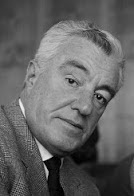Amedeo Modigliani – artist
Illness marred the life of creative genius
Painter and sculptor Amedeo Clemente Modigliani was born on this day in 1884 in Livorno in Tuscany. The artist went on to become famous for his portraits and his paintings of nudes, which were characterised by their elongated faces and figures. Modigliani did not receive much acclaim during his lifetime, but after his death his work became popular and achieved high prices. He was born into a Jewish family and suffered health problems as a child, but began drawing and painting from an early age and begged his family to take him to see the paintings in the Uffizi in Florence. His mother enrolled him at the art school of Guglielmo Micheli in Livorno where he received artistic instruction influenced by the style and themes of 19th century Italian art. In 1902 Modigliani enrolled in the school of nude studies at the Accademia di Belle Art in Florence and then moved on to Venice to continue his studies. In 1906 he moved to Paris, where he set up a studio with Jacob Epstein. He lived with a beautiful young French art student, Jeanne Hébuterne, from 1917 until he became ill and died in 1920, at the age of just 35. Read more…
___________________________________________________________
Carla Fendi - fashion executive
Turned family business into global giant
Carla Fendi, whose flair for marketing helped propel her mother and father’s small fur and leather business into a worldwide fashion giant, was born on this day in 1937 in Rome. Under Fendi’s guidance, the business became so successful that at one point it had 215 stores worldwide and generated more than $1.2 billion in annual sales. She also helped turn a young Paris-based German designer named Karl Lagerfeld into a household name, having taken up a friend’s recommendation to give him a try when the firm needed some fresh ideas in the 1960s. Carla Fendi was one of five sisters who grew up in the leather workshop and fur boutique run by Edoardo and Adele Fendi in the Via del Plebiscito, near Rome’s Piazza Venezia. The family lived in rooms above the shop. When Edoardo died in 1954, the sisters began to help the mother with the business, gradually taking on more responsibility. The business had a solid, up-market clientele for its bags and cases but Carla sensed it needed to appeal to attract younger, more fashion-conscious customers if it were to expand. Read more…
___________________________________________________________
Agostino Codazzi - soldier and map-maker
Italian who mapped first route for Panama Canal
Agostino Codazzi, a soldier, scientist, geographer and cartographer who became a national hero in Venezuela and plotted the route for the Panama Canal on behalf of the British government, was born on this day in 1793 in the town of Lugo in Emilia-Romagna. When the canal was eventually built by United States engineers, they followed the precise route that Codazzi had recommended, although the Italian has not been credited in the history of the project. Known in Latin America as Agustín Codazzi, he was born Giovanni Battista Agostino Codazzi. As a young man, he was excited about the French Revolution and the idea of the ruling classes being overthrown by the people in pursuit of a more equitable society. After attending the Scuola di Artiglieria military academy in Pavia, he joined Napoleon’s army and served with them until the Napoleonic empire collapsed in 1815. It was then that he decided to travel further afield, finally settling in Venezuela, where he offered his military knowledge to another revolutionary, Simón Bolívar - known as El Libertador - who played a leading role in the establishment of Venezuela, Bolivia, Colombia, Ecuador, Peru, and Panama as sovereign states, independent of Spanish rule. Read more…
___________________________________________________________
Stefano della Bella – printmaker
Artist sketched important events preserving them for posterity
Stefano della Bella, who produced hundreds of sketches of court festivities held by the Medici, as well as visual records of important public occasions, died on this day in 1664 in Florence. Della Bella was a draughtsman and printmaker known for his etchings of military and court scenes. He left more than 1000 prints and several thousand drawings, but only one known painting. He was born into a family of artists in Florence in 1610 and was apprenticed to a goldsmith. However he went on to become an engraver and studied etching. Thanks to the patronage of the Medici family, della Bella was able to study for six years in Rome living in the Medici Palace in the Villa Borghese area. Della Bella produced views of Rome, drawings of antiquities and sketches of crowded public occasions in a series of sketchbooks, many of which were later turned into prints. Della Bella captured major events of his time, just like a photographer does today, and his prints have enabled people to see in detail the lavish festivities held by the Medici family and what daily life was like in Rome - and also in Paris - in the first half of the 17th century. Read more…
























